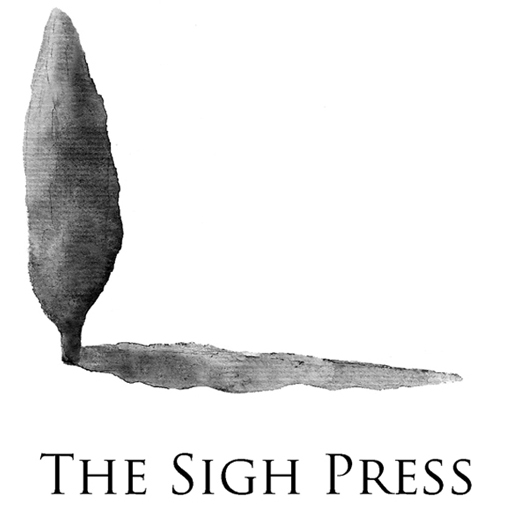
Notes from The Sigh Press Editors
Mundy Walsh & Lyall Harris
We are excited to bring you the writing of Mark Wallace. His essay “The Road Trip Test” set the tone and theme—Road Trip—for our Spring Issue. Fresh, imaginative images by a talented young artist, Daniela Daisies, whom we met in Florence last summer, complement Wallace’s story, stirring poems by Diana Devlin, and a Cultural Commentary by John Gerard Sapodilla and William L. Story.
We hope you’ll read our Ampersand 12 interview with Mark Wallace if you haven’t yet. Please visit thesighpress.com for our next issue theme and submission deadline. We post at least three times a week on our Facebook page.
Read about the contributors to this issue and see the PDF version of this issue at The Journal.
Subscribe to our newsletter, where you’ll receive the latest issues, Ampersand interviews and news:
Contents
*
[ ]
,
´
?
*
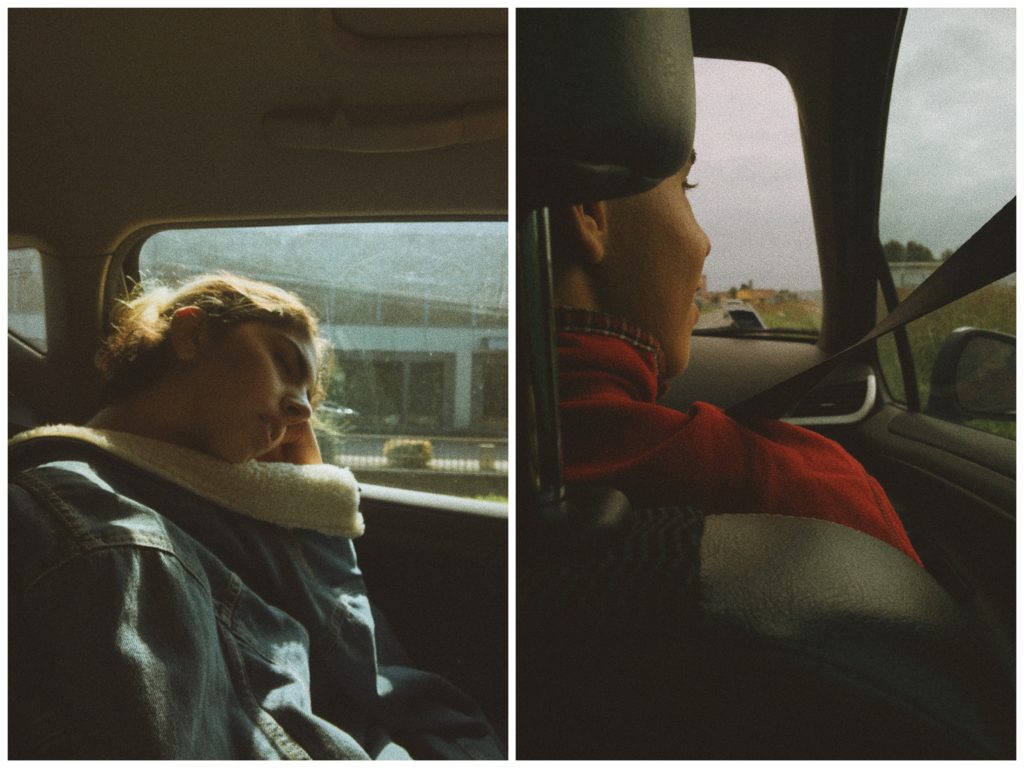
TO CREMA
[ ]
THE ROAD TRIP TEST
MARK WALLACE
My first marriage lasted eleven months—we didn’t even make it to our first anniversary. I tell myself the experience didn’t put me off the institution, but I realize now that it was more than ten years between my first divorce and my second marriage. Part of what I wondered along the way was how to avoid another such disappointment. Fortunately, a friend gave me a key piece of advice: that one should always administer the Road Trip Test to a prospective partner before taking the momentous step of marrying them.
The thinking behind the Road Trip Test runs something like this: If you’re considering spending the rest of your life with someone, first make sure you can spend at least a few days traveling together without tearing each other to pieces or becoming hopelessly turned off by the intimate details of your significant other’s unadorned days.
No amount of dating gives you the real story on someone, and even sex doesn’t fill in all the details you need to know. If you want to know whether you’ll be able to tolerate someone through all the experiences a life together will throw at you, spend some time with them at their grubby, unkempt, annoyed and annoying, resolutely undignified worst. And where better to find that person than on the road.
On its face, the Road Trip Test makes a certain amount of sense. After all, travel does generate heightened experiences in a context of more or less forced togetherness—a recipe very similar to a marriage. But is the test a good gauge of compatibility? Could it actually improve your chances of staying together? Does it really uncover everything you need to know?

COFFEE TRIP
I administered a Road Trip Test to a prospective spouse in the period between my two marriages. The trip was complicated by the fact that my then-girlfriend and I were traveling with two little proctors: a ten- year-old boy and seven-year-old girl, her children from a previous marriage. And we were cheating a bit: though we’d been dating only six months and hadn’t really traveled together before, we were already planning to wed. Still, there were three weeks and three European cities ahead of us, across England, France, and Italy. We had some solid getting- to-know-you time in store, time that would presumably show us new things about each other—things we hoped wouldn’t lead us to rethink our decision. A change of heart at that point would have been inconvenient, to say the least: our plan was to travel to Tuscany and there be married in a small ceremony attended by just a few friends.
We were not the most footloose foursome. Because the trip was to end in our wedding, we landed at Heathrow fully loaded: two hatboxes, a garment bag holding a suit and several dresses, a full array of checked and carry-on luggage, and a brood of stuffed animals the loss of which would constitute nothing less than an international incident, I’d been assured.
It was the children’s tastes more than anyone’s that dictated our itinerary in each city. We did none of the things I had hoped to do in London. Instead, we found a playground near the flat we were borrowing and stopped at it every morning and every afternoon. The only museum we actually entered was the Transit Museum, where I took refuge with my prospective stepson while the girls shopped Covent Garden.
It was August, and Europe was dreadful. London was muggy, and the ice creams we ate on the lawn by the Tate Modern drooped alarmingly, though the kids didn’t care. We rode the Eye, and bought our souvenir picture. One day we trekked for hours to the zoo in Battersea Park, then for hours through Chelsea, somehow missing any kind of eatery or taxicab. We finally found a pub willing to serve us some bangers and mash and shepherd’s pies, despite the kids being underage — and quite excited at the prospect of being nabbed by the cops.
Paris taught us why the French take August off by showing us its hottest, most irritated face. The only people in the entire city were tourists. Still, we managed to eat crepes, visit a museum or two, get up the Eiffel Tower, and cool off at Shakespeare & Co., where the kids settled in as only literary ingenues can. We saw a handful of sights and visited a larger handful of playgrounds — including the one behind Notre Dame, the one with the infamous “tilty spinny thing” from which I sent my prospective stepdaughter flying into the dirt by spinning her a bit too fast. I still haven’t lived that one down.
As we wound up our time in the City of Light, with two weeks down and one to go, we all still enjoyed each other’s company. Even with two kids in tow, this Road Trip Test appeared to be a breeze.
And then we tried to leave Paris.
If travel generates heightened experiences, second-rate French railway stations at the peak of summer generate decidedly lowered ones. We were headed for Florence, on a train from Gare de Paris Bercy, a run- down brutalist pile of poured concrete that glares spitefully at its grander sister, the nearby Paris-Gare de Lyon. We’d made sensible allowances for the kids: we arrived 45 minutes early and looked for a healthy snack; we found a bag of chips and a candy bar no one liked. We spent an impatient hour in the draft of a faulty air conditioner—and then two more hours in the increasingly crowded station as the train became more and more delayed.
The heat of the afternoon only grew. The stink of toilets drifted out through the holes where doorknobs once had been. The rough-shouldered crowd of commuters looked like they’d just stepped off the set of a noirish French gangster film—one with a cast of thousands. Eventually, we were so tightly packed in that it seemed like we wouldn’t be able to move down the platform at all, should a train actually arrive.
I don’t know who started crying first. I think it was my girlfriend’s daughter, overheated in the station and lacking solid food. As we finally struggled to the train car, with the weeping girl in my arms, her brother had trouble getting his suitcase up the steps and he broke down too. Then my fiancée barked her shin as we came into our compartment, and I was suddenly in the midst of a family-wide meltdown.
It was not a pretty picture. The ten-year-old had made it into the room only by sprawling, defeated and crying, onto his toppled suitcase— the one with the little blue cars all over it. His little sister was huddled on one of the foldaway beds, catching her breath in the stifling air as she tried bravely to wipe away her tears. And the woman I was planning to marry was crying now too, fuming at the heat, at France, at the awful little train station, at herself, at the kids, at me.
I stood in the doorway, helpless to do anything but try to be a calm eye for the storm to circle around. I would have liked to help them, but there was nothing to be done. Sometimes, the best thing you can do is not do anything, and not run away.
They were a mess. And we were on the cusp of becoming a family, which meant that we were a mess. We certainly knew each other better than we had before. This was just the kind of thing the Road Trip Test was meant to surface, I supposed. Did that mean we had passed?
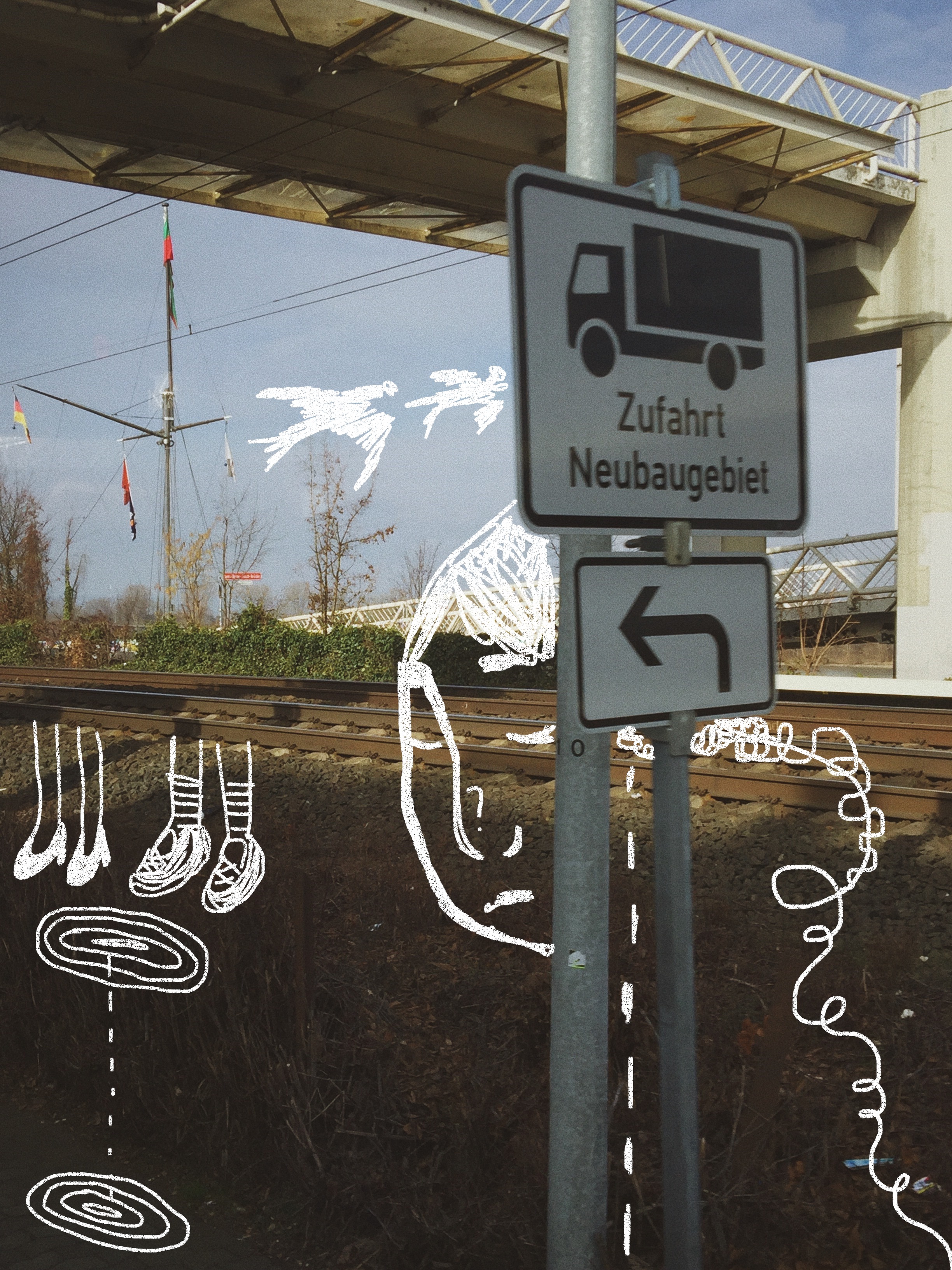
ZUFAHRT NEUBAUGEBIET
We had met on a road trip of sorts, at the wedding of mutual friends in Rio de Janeiro, two and a half years before. I’ve never put much stock in love at first sight, but this person stood out to me so immediately that the first thing that crossed my mind was, “What’s a fabulous woman like this doing hanging out with a bunch of losers like my friends?” She also reports an uncharacteristic thought on first laying eyes on me: “Who’s the hottie?”
We lived on opposite coasts at the time, and she had a boyfriend. But there was clearly a connection between us we both wanted to explore. My excuse for staying in touch was that I was running a tech startup, while she had done marketing for similar ventures. On my trips to Silicon Valley to see our investors, I would ask my friends whether she had dumped her boyfriend yet. I didn’t know it at the time, but she was asking similar questions about me.
We saw each other once or twice, but rarely in a context that allowed for more than polite conversation. By the time I moved to the west coast a year later, she had broken up with the boyfriend—but now I had a long-distance girlfriend in New York.
The problem was that I had a better time being friends with this woman in California than I did being lovers with my girlfriend in New York. And this despite the fact that we played it so safe that I thought I was being friendzoned at one point. When I broke up with my girlfriend, it was because I didn’t want to be in that relationship anymore, not because something else had started on the side.
To my surprise, I found that this woman I had grown so fond of had been dumped that same day by the guy she was dating (via text message — classy). We arranged to commiserate over coffee the next morning. Coffee became a walk in the park, which became an ice cream, which became a movie, which became Vietnamese takeout, which we ate in her kitchen until late in the night between trips to the bedroom for steamier fare.
We spent the next six months barrelling forward just as fast. Without really thinking about it, we simply said ‘yes’ to the relationship whenever we could. Rather than play hard to get or strategize about how often to ask for a date, we indulged our impulses. As trite as it sounds, we followed our hearts. For better, and for worse.
We swapped house keys after about a week. We told everyone who we were seeing. We said “I love you” with abandon. We were walking down the street one morning, ten days after our coffee date, when she turned to me and blurted out, “Do you think we’ll need a bigger house?”
I met her kids early on. They were beautiful, and she handled them with a grace and love that put me in awe. She was gorgeous and generous and sensitive and smart, she could have an ungodly temper, and she slept like a teenager. We were in love and we had to be together, and we didn’t need a Road Trip Test to tell us so.
What still strikes me about those six months was the openness with which we approached each other. Maybe that’s why, when she asked me to come over one day because she needed to talk, I knew what she had to tell me: She was pregnant. I was taken aback—this had not been part of my plan—but I was delighted. More than that, it just made sense. We were so clearly on a road together, test or no, that an unexpected addition to a family we hadn’t yet formed was something we could all but take in stride. We had been toying with the idea of marriage anyway. Now it seemed only more clearly the right thing to do.
Then my startup went under. This kind of thing happens every day, of course, but this was a project I’d spent more than two years on, and that I’d left a previous career for. The rug had very much been pulled out from under me. But this was a speed bump, not a train wreck. And on the brighter side, it meant I was free to join my girlfriend on the three-week European vacation she’d been planning with her kids.
Life is full of surprises, and that was not the only one in store for us.
We had shared news of the pregnancy only with her children and our siblings and parents. We had dropped the kids off with their grandparents for a long weekend and were heading back to San Francisco, plotting how we would announce the happy news to our friends, when my fiancée began to feel queasy. She was eight or ten weeks along, right on time for morning sickness. We pulled into a rest stop on I-80. But instead of throwing up, she complained of feeling crampy, and noticed some spotting.
We made an appointment with her doctor, though we already knew what had happened: a miscarriage. Nothing has ever thrown me so badly. Far more than with the folding of my company, I felt like everything I’d done until then—my entire life—had been a waste of effort and of time. And because this was something happening to her, to her body, she felt worse. When the kids found out, they too were distraught. For the first time in our relationship, we didn’t know what to say to each other.
Our romance could easily have shattered, at that point, but we stuck it out. And, perhaps because we were caught up in some admittedly naive notion of destiny, we remained as open as we’d been before. We put one foot in front of the other and we continued to not run away.

VOYAGE OF IMAGES
Which is part of what made it possible for me to stand by them as we suffocated on that Paris train. Even the Gare de Bercy couldn’t stop us. We made it to Italy in one piece, and though it was, if anything, more sweltering still, we spent a charmed week in a villa outside Florence, as guests of family friends. In keeping with the pace of our relationship, we had arranged our wedding ceremony only about six weeks prior, and had each invited one person we knew would be fool enough to make a last- minute trip to high-summer Europe to witness our vows. We went into the city to marvel at the David. My best man nearly had his watch stolen. But we were somehow blessed. We tried to find flowers on the day before the ceremony, but not a single florist was open. Then, just as we were about to cross the Arno on our way back out of town, we spotted a lone streetside vendor selling his last sunflowers out of the back of a truck. We bought them all.
We were married at the end of August on a hillside overlooking an olive orchard in Tuscany, with our hostess officiating and a guest list that included five children, six adults, a couple of pieces of rusting farm equipment, and a spectacularly timed performance from the setting sun. There has not been a more beautiful day in my life. If we had spent any more time planning it, the moment wouldn’t have been as perfect. And if we had waited to see whether we passed each other’s Road Trip Test, that moment might never have happened at all.
In the near-decade since then, we’ve been through a lot. My career has been something of a roller-coaster since that first startup folded. We committed ourselves to having another child, a project that turned out to be utterly consuming and to take more than three years—but which exceeded twice as well as we imagined it might: the big kids, now teens, have been joined by a pair of hilarious twins. We are all of us overwhelmed much of the time, and our relationships are not always easy, but all of us try.
Some patches have been pretty rough. We were sued over damage to a neighbor’s yard plant, of all things. There’s been friction between the big kids and their dad—and between their dad and us. Happily, those troubles are behind us, and everyone is on good terms again. My wife’s ex-husband joined us for dinner last Thanksgiving, and together we made a somewhat awkward but very modern extended family. We were glad we did. The big kids weren’t forced to choose between their parents, and the twins were delighted to share a kids’ table not with their big brother and sister, but with their not-quite-siblings, my wife’s ex’s kids from his second marriage.
When I look at our life together, I think we’ve been wildly lucky. And though (as my wife will tell you) I am not always good at expressing it, I’m grateful for that life every day. Our relationship isn’t perfect. We’ve had some pretty low lows in the past ten years — half-jokes about the Seven Year Itch sometimes hit too close to home. But nothing has heightened my experience like being part of our family. And nothing so facile as a Road Trip Test could have prepared me for it.
Traveling together does tell you all kinds of things: How do you get along in the dull moments that aren’t work, romance, or roadside attractions? Are you attracted by the same attractions at all? Is she as sexy in a pair of coffee-stained sweatpants? (Yes.) How do you feel about taking his underwear to the laundromat in a country where you don’t understand the language well enough to even ask for change?
So much has happened in the course of our marriage that I now think of the Road Trip Test as a kind of relationshipial astronomy class — not completely boring, and almost impossible to fail if you’re paying attention. It’s a pretty poor indicator of what things will be like when “life happens,” as it inevitably does. And it’s certainly no test of a couple’s ability to sustain a marriage.
That test will last the rest of our lives, if all goes to plan. Though I hate to contemplate the scenario, it’s of course not impossible that our marriage won’t last. Love may or may not conquer everything, and a grudging acceptance, at times, is the only thing that gets us through the day. But if the nearly ten years that have passed since that trip are anything to judge by, the joys and triumphs are worth so much more, to all of us, than the conflicts and the strife. Even when we’re getting the other answers wrong, the only test question that seems to have mattered is, Do we love each other? And so far, there’s only been one choice where that question is concerned.
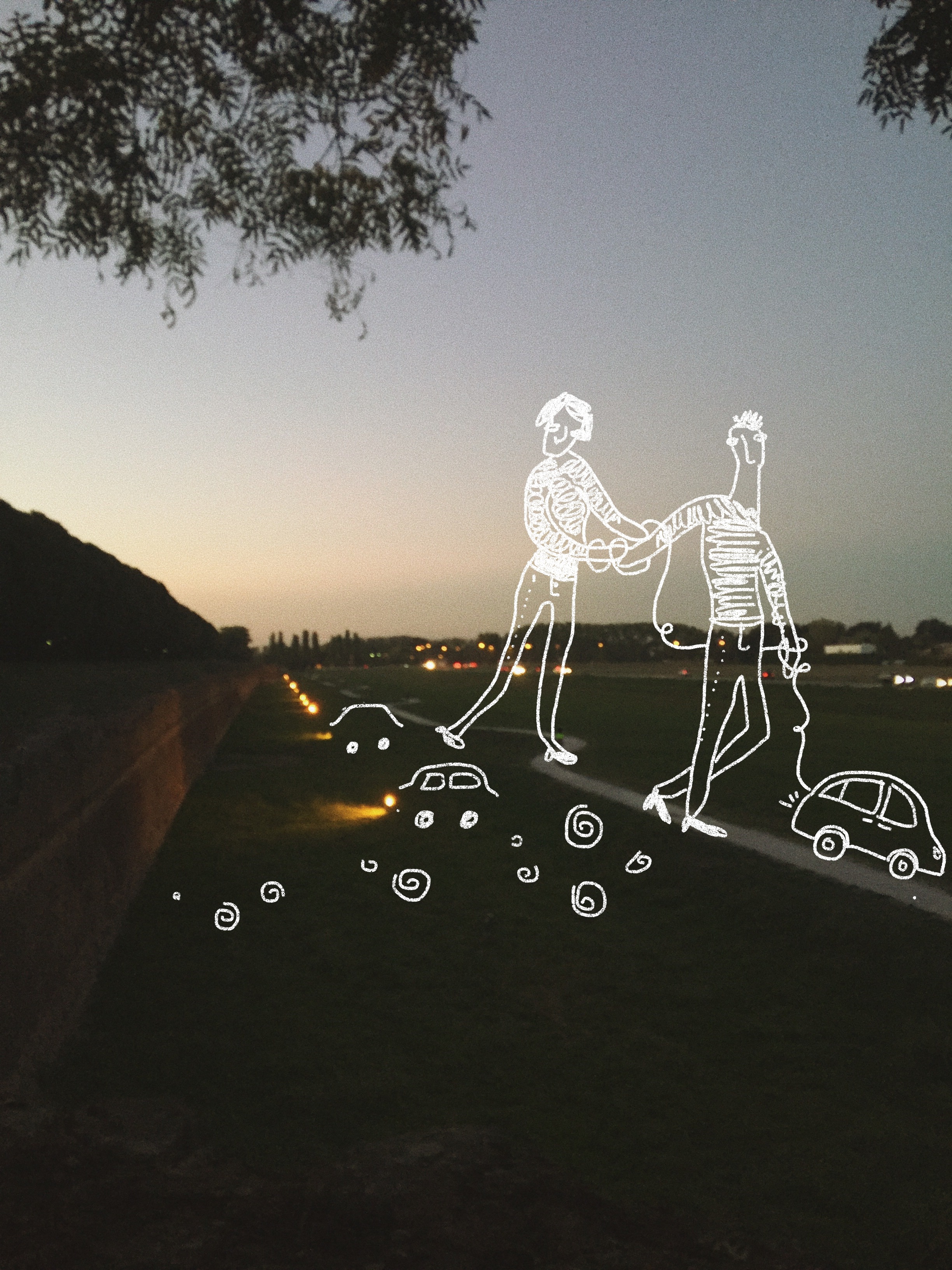
LET ME GUIDE YOU
,
MYSTERY TOUR
DIANA DEVLIN
Bundled in the back of a white Ford Classic
thighs sticky on warm red leather
we fought the hypnotic queasiness of dangling trees
licked lips unaccustomed to sudden treats
two young sets of eyes collected fleeting landscapes
on blotting paper minds
direction was irrelevant this unexpected road trip
whisked us up spun us round
no need to ask when we’d be there
We played clapping games and were not silenced
the sky folded into ocean and we drifted
street lamps blinked pink turned to amber
making mum’s white unsmiling face blush gold
like the lady in blue we knew from church
mum’s hands were not soft and white like hers
but red and cracked like pigeons’ feet
gripping the wheel so the knobbles shone
in the dark we saw her eyes shine too
and then she took a breath and said
we’re going back

THE ROADS INSIDE MY BRAIN (ON FIRE)
STANDING STONES
No weeds grow here
where time gathers like moss
at our feet, holds us still
under these moving skies.
This vast blue bears down on bone.
Its silence makes sculptures of us.
We stand, the two of us
small against these ancient stones
thinking our big thoughts.
The landscape tugs at my voice
but I cannot draw you out.
Between these columns
the wind weaves like loosened ties.
You stand your ground,
suck strength from stone,
wish your fragile truth
was more believable
than the solid lies
I’ve come to love.
´
LITTLE SHEILA
JOHN GERARD SAPODILLA & WILLIAM L. STORY

THE ROADS INSIDE MY BRAIN
The traffic lights turn red. A car without a driver’s door creaks to a stop at the intersection. Little Sheila comes down from the sidewalk with her bucket full of clean, fresh water. She has filled the bucket in the fountain and heads for the car with a sponge and a rag in the other hand. She tries to reach the windshield, but realizes she is still too small, and then goes in front of the car and begins to wash the headlights with care and attention, until the traffic light turns green.
Sheila’s accommodation in the night was a cardboard box on the grid of a restaurant kitchen. The grid blows warm air until midnight.
Lately she has noticed a car damaged by an explosion. The owner took out the engine and abandoned it on the road. Sheltered, Sheila can now sleep on its soft red velvet backseat.
?
What life test are you taking?
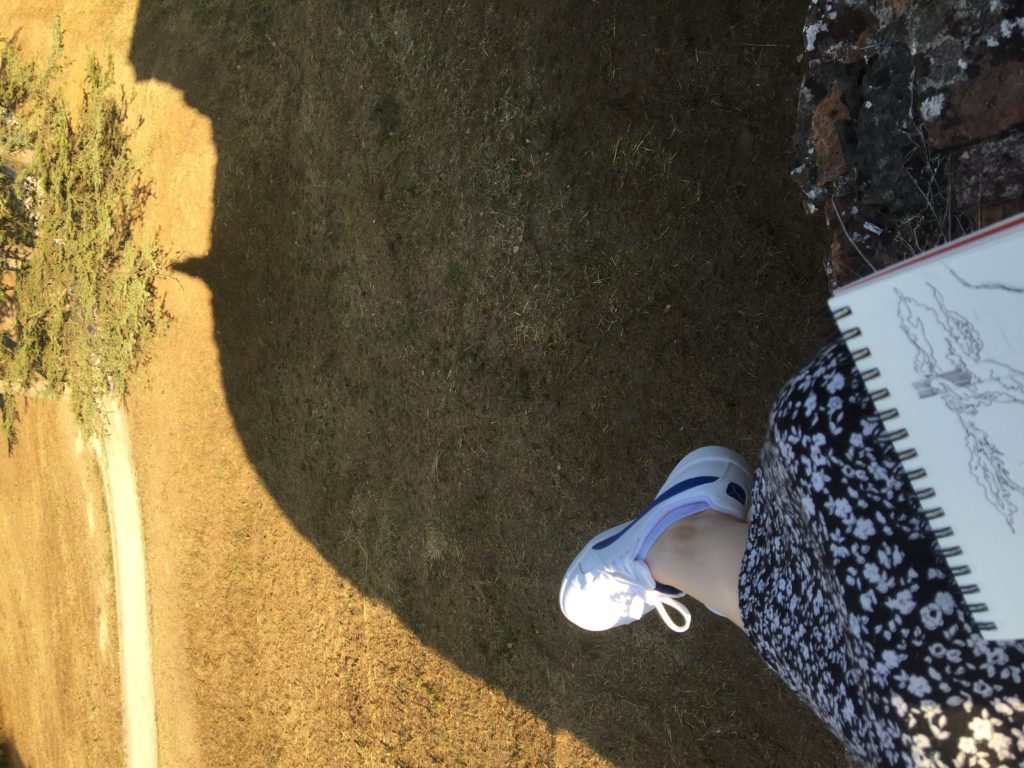
JE M’ÉCHAPPE POUR DESSINER

ISSUE 21 • Spring 2019 will be published in June.
Visit www.thesighpress.com for details.
© 2019 THE SIGH PRESS
None of the work published by The Sigh Press may be copied
for purposes other than reviews without the author and artist’s written permission.